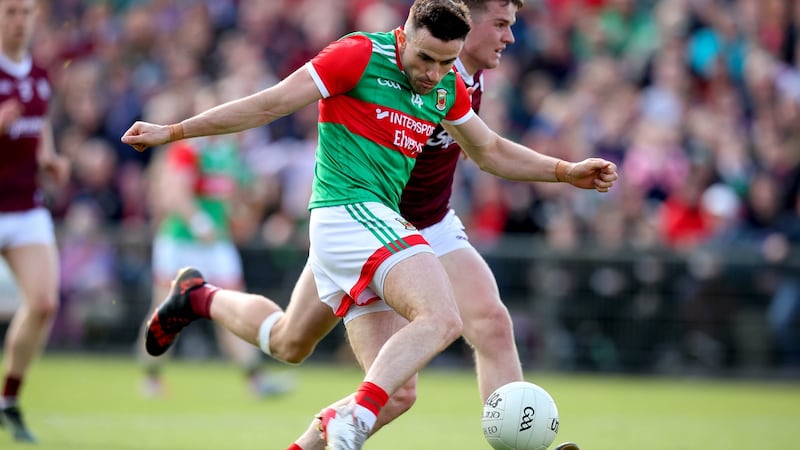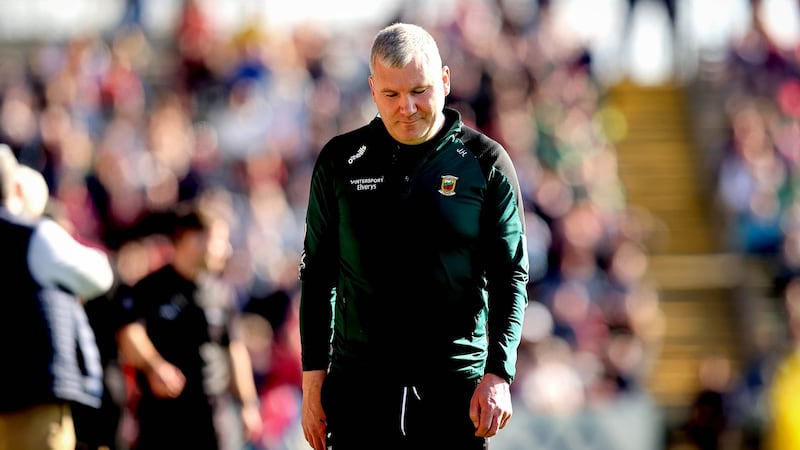Not for the first time, the football championship has transformed the GAA season into gorgeous Technicolour. Sometimes, the championship starts with a bang and it’s always down to a happy accident of fixtures rather than any design. Launching the biggest sports tournament in the country has never come naturally or easily to the GAA.
There was no real fanfare before Sunday’s big provincial games. And it has been a thorny few months for the association. Bad news on the doorstep, as the old song goes. The headlines were incessant. Teams reaching league finals that they did not want to win. In what sport does that happen?
Then, the rolling stand-off between the GPA and the GAA and the refusal of the players to engage with the media. There was the Páirc Uí Chaoimh and Ed Sheeran fiasco; the Donegal-Armagh fall out and a sense of a disciplinary process which satisfies nobody; a cadre of referees under pressure; a late switch of the Roscommon-Sligo championship game from Sunday to Saturday evening.
The GAA has a lot of committees but it doesn’t seem to have a Lessons Learned committee. Maybe we prefer controversies.
So after all of that, the season needed two humdinger occasions to remind us of why we are supposed to love this game. In the west, Mayo-Galway needs no introduction. The problem was that the form lines were blurred.
One of the things that is easily forgotten is how well Galway played in the first half in Croke Park in last year's corresponding fixture - until they lost a key player in Shane Walsh. But they weren't a million miles away from a Mayo team who went on to become favourites to win the All-Ireland final.

After that game, the theme became Mayo’s high-octane comeback and their unassailable spirit. All true. But the story was not quite as straightforward. Nor was the gap quite so pronounced. And I imagine Galway’s objective at the beginning of the season was to improve on that day.
We saw evidence of that through the league. They comfortably regained promotion to Division One. The most significant result was not their league final loss to Roscommon but the four goals they put past a flinty Derry team up in Owenbeg. That was the clear signal of what they were about.
What does a manager want from a league? It’s a question that really becomes relevant when we see how they shape up in the opening round of the championship. I imagine road-testing a handful of newcomers is a common goal - while improving overall fitness levels.
You would like to have a strong idea of your starting 15 and your match day squad. But the big thing you probably want to do is know your best lines: the composition of your fullback line through to full forward line. And this is where Mayo fell down over the spring.
They failed to establish a consistent series of selections through the lines. This was partly forced on them because of a luckless injury streak. For instance, Aidan O'Shea came back to midfield to replace the injured Jordan Flynn. Cillian O'Connor was pulled from cold storage to play full forward on Sunday. The fullback line of O'Hora, Mullin and Keegan was the closest thing that Mayo had to a consistent line - and Mullin hobbled off injured in the second half.
But Mayo also rotated their squad liberally through the league. It’s fair enough but the combination of rotation and injuries means you cannot establish a consistency of form. And just like the league final, they were ragged in cohesion and pattern.
Settled
Galway, in contrast, were very settled in composition of personnel and positions. Their performance in Castlebar was a five to six point win disguised as a one point cliffhanger. Deep in the second half, they led by six - and deservedly so. Yet they were mightily relieved to hear the whistle go five minutes later.
Mayo are masters at visiting late game horror on other teams. But Galway contributed to their own distress in that injury time period. They do not win enough of their own long kick outs and that is a concern for them: it will be noted. The most impressive aspect of Sunday is that Galway were solid defensively. Remember, Roscommon put 1-20 on them in the league final. They figured that out - and limited the chaos of the Mayo running game.
They held Mayo to 0-9 from play. How did they do this? They used two Corofin men as sweepers: Dylan McHugh and Kieran Molloy. Both are clever ball players.
They weren’t orthodox sweepers but they were sagging in from the wings to cover the middle constantly, therefore cutting off the option of a Mayo kick pass to the inside line. And they were alive to the opportunity to make physical contact with Mayo’s strike runners. In basketball parlance, they were seeing man and seeing ball simultaneously. People say you need a season to bed down a defensive system.

If you have clever players who understand weak-side defensive concepts, it can be developed extremely quickly. Cillian McDaid coming in was a big plus: watch him become a prominent player. John Daly is a good footballing centre-half back and Sean Kelly looks very assured at fullback, which has been a troublesome position for Galway since the retirement of Finian Hanley.
Paul Conroy is a smashing footballer. His three points were decisive because score-getting was not his primary job. Sunday was not Matthew Tierney's day but he will have plenty of days in the sun. Up front, Galway did fine. Damien Comer and Walsh showed glimpses of their true potential. Importantly, they contributed without being on fire.
They scored the points they should be scoring - and Walsh’s three place kicks from distance, on his wrong side, advertise the fact that he is a rare talent. Mayo, in contrast, began to fire inexplicable wides. Once again, will we in Mayo ever learn to respect the fact that you need a left-footed free taker in reserve?
Six of the Galway front eight scored from play over the afternoon. Only three of the Mayo front eight scored from play. I know this is an old, old complaint. But it remains valid. Your house is flooded because the pipe is leaking. That diagnosis will never change. It’s the same with Mayo and the attack-shots-scores ratio.
I scanned a series of stats that were circulated from RTE. I find the Attacks/Shots/Scores ratio so telling when it comes to my own county. On Sunday, Mayo had 40 attacks, 31 shots but only 16 scores. The first two are terrific. The last figure is shocking. Galway, in contrast, had 27/22/15. Right there is the story of the game. And I believe it contains the story of why Mayo have not won more major games.
In short, Mayo had a 52 per cent conversion on Sunday. That means for every one they swung over, they missed another. In their last four major matches, Mayo have not scored a goal. They are hitting an average of 0-15. That won't win anything. They created a terrific goal chance for Jason Doherty just before half time. In close combat contact, the ball is supposed to be struck low to either corner.
You cannot close your eyes and just blast it. But Mayo players repeatedly butcher three-on-two situations.
And then you go back to the enduring theme: are Mayo favouring big athletes and ball carriers over the player with the velvety finishing touch? Ryan O’ Donoghue possesses a subtle finish but he is operating as a creator more so than finisher.
Grim
The stat line looked familiarly grim for Mayo. Twelve wides for them - to Galway’s three. A gap of 31 minutes without a score from play in the second half. Then, a blizzard of scores in the frantic comeback.
Let's look at the very last chance that fell to young Aiden Orme. The approach play was excellent and he had the room to shoot for the point. But I would argue that Aiden is not quite at the stage in his career where he takes that shot on. He is a rookie on his wrong side and was not long on the pitch.
If there is any mild defensive indiscretion, the referee will give a free. Dublin or Kerry, for instance, would recycle and swing the ball to look for the high-percentage opportunity or a free. Taking the shot was brave but it was a very difficult opportunity. It was a low percentage chance. And ultimately, it was another wide.
And Mayo were fortunate that Finnian Ó Laoí was wrongly black carded in the first half. It helped them recover from the disastrous opening 10 minutes when they were hit with 1-3. I wouldn't blame David Coldrick for issuing the black card. On first evidence, that's exactly what it looked like. But the replay showed that it was more a case of Cillian O'Connor, an experienced soldier, drifting in front of his marker and initiating a collision. It all points to the growing need for a VAR facility in Gaelic football.
When was the last time you saw true inventiveness from a Mayo forward line?
As it turned out, Ó Laoí only sat out six minutes of actual play. Again, a stop-watch controlled by the fourth official could easily ensure that the black carded player serves his full 10 minutes on the sideline. Otherwise, the period becomes a joke with the punished team trying to kill minutes with injury stoppages and what not.
Finally, we saw Mayo get a point from James Carr despite a double hop. Suppose that is in an All-Ireland final? Or suppose Mayo had dragged Galway into extra time and won the game? How important would that score seem now in the context of Galway's season. Again, a VAR facility would quickly have identified the illegality of the score and the referee could cancel it.
Vision
There was a curious flatness about Mayo’s game until that last hurrah. Their style looks so formulaic at this stage. When was the last time you saw true inventiveness from a Mayo forward line? The unexpected hand-pass; the bit of vision? Either we don’t risk that kind of self-expression or we don’t select those players. There is an old mentality: better to go with the warhorse and the big fella.
How come Roscommon can stay so competitive? Because they have really tidy forwards, is why. I am 100 per cent convinced that if Mayo had, for instance, Diarmuid Murtagh and Enda Smith in their squad over the past five or six years, they would have at least one All-Ireland title by now. We are not producing that kind of player: a natural, tidy consistent score-getter in open play. Or else Mayo are not looking for him.
Tradition and ability strongly favours a Galway-Roscommon Connacht final and now Padraic Joyce’s team look in good shape to head into the All-Ireland series. But they do need further improvement from midfield and from their vaunted inside forward line.
So just like that, the All-Ireland football championship is up and running. It was a terrific weekend, with a series of wonderful games in Leinster and a rejuvenated Donegal suggesting a lively few weeks in the Ulster theatre. Maybe, just maybe, we witnessed a sleeping giant awakening in the west. For Mayo, though, a few sleepless weeks beckon before we know what’s what.

















